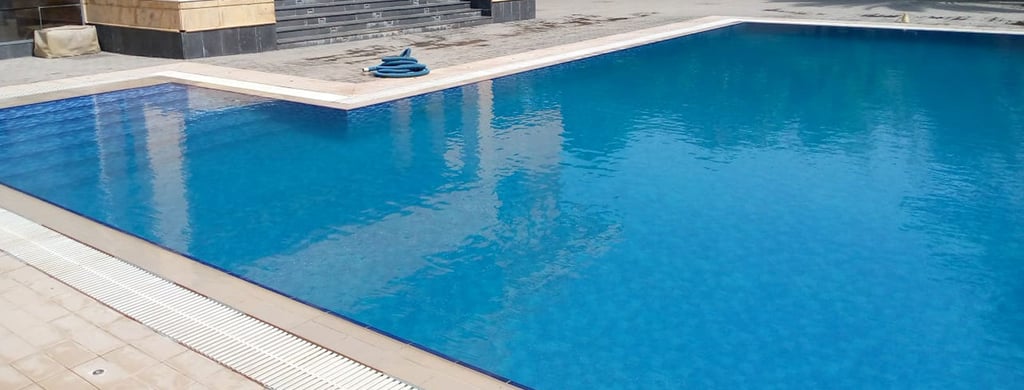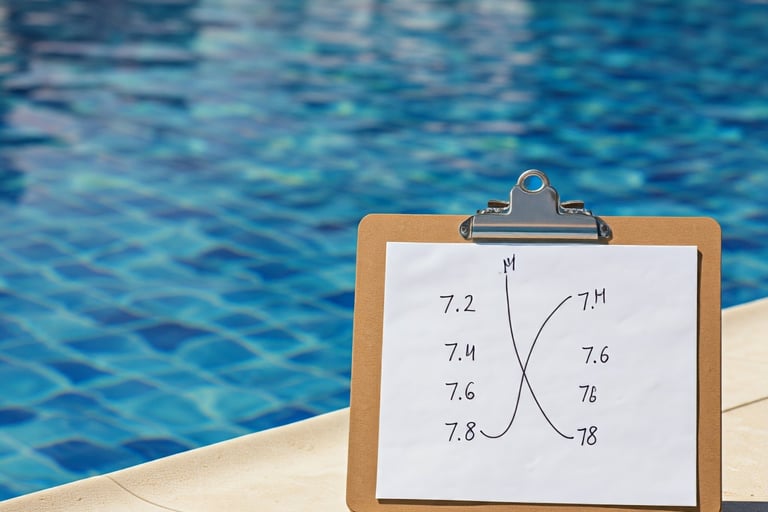What Is the Ideal pH of a Pool? A Complete Guide to Pool Maintenance
Pool ph plays an important role for the skin and eye contact . it may vary in some conditions depending on various factors and needs to be observed on regular basis by an expert or an operator for the frequent times .
GNE Team
10/26/20243 min read


Conclusion: Keep Your Pool pH Balanced for a Better Swim!
Maintaining the ideal pH level of 7.2 to 7.8 is essential for a safe, comfortable, and crystal-clear pool. Regular testing and timely adjustments will ensure your pool stays inviting all season long. Don’t forget—balanced water not only protects your swimmers but also extends the life of your pool equipment.
By following these simple tips, you’ll be on your way to becoming a pro at pool maintenance!
If you own a pool, you know that maintaining water quality is essential for a safe and enjoyable swimming experience. One of the most critical factors in pool care is pH balance. In this article, we’ll dive into the importance of maintaining the right pH levels, the recommended pH range, and tips to keep your pool in perfect condition.
What Is pH, and Why Does It Matter?
The pH level measures how acidic or alkaline your pool water is, on a scale from 0 to 14.
pH below 7: The water is acidic.
pH above 7: The water is alkaline.
Keeping your pool’s pH level within the right range ensures:
Comfortable swimming (avoids skin and eye irritation).
Efficient chlorine performance (chlorine works best at the correct pH).
Prevents scaling and corrosion (protects pool equipment and surfaces).
What Is the Ideal pH Range for a Pool?
The recommended pH level for pools is between 7.2 and 7.8.
7.4 is often considered the perfect pH because it matches the pH of human tears, minimizing eye irritation.
Keeping pH within this range ensures your chlorine stays effective—too high or too low pH levels can make chlorine less efficient, allowing bacteria and algae to grow.


Effects of Incorrect pH Levels
Low pH (Below 7.2)
Causes eye and skin irritation.
Leads to corrosion of metal parts (like ladders and pumps).
Deteriorates pool liners and plaster.
High pH (Above 7.8)
Can cause cloudy water.
Reduces chlorine’s effectiveness, leading to algae growth.
Leaves scaly deposits on pool surfaces and equipment.
How to Test and Adjust Pool pH
Test the Water Frequently
Use pH test kits or strips at least twice a week to keep an eye on the water chemistry. Regular testing ensures you can catch pH imbalances early.Lower pH with Muriatic Acid or Sodium Bisulfate
If your pH is too high, adding a pool acid will help bring it down.Raise pH with Soda Ash or Baking Soda
If the pH is too low, add sodium carbonate (soda ash) or baking soda to increase it.
Tips for Maintaining Ideal Pool pH Levels
Check Total Alkalinity (TA):
TA helps stabilize the pH. Keep it between 80 and 120 ppm to prevent sudden pH fluctuations.Monitor After Rainstorms:
Rainwater is often acidic, which can lower the pool’s pH. Always check levels after heavy rain.Regularly Clean Your Pool Filters:
A well-maintained filter system promotes balanced water chemistry by removing debris and contaminants.Shock the Pool Periodically:
Shocking helps eliminate organic contaminants that can alter pH levels.
Related Posts
5 Signs Your Pool Needs a Shock Treatment
Frequently Asked Questions (FAQ)
1. How often should I test my pool’s pH?
You should test your pool’s pH at least twice a week to ensure proper chemical balance.
2. Can I use vinegar to lower the pool’s pH?
While vinegar is acidic, it’s not recommended for pool use. Stick to muriatic acid or sodium bisulfate for better results.
3. What happens if I swim in a pool with an incorrect pH?
Swimming in improperly balanced water can cause skin and eye irritation and may result in the growth of bacteria or algae.


GN Envirotech Solution
Expert services in wastewater management and compliance.
FOR Services
Contact
gnenvirotechsolutions@gmail.com
+91 9929-60-8611
GNE SOLUTION ALL RIGHTS RESERVED © 2025
©
